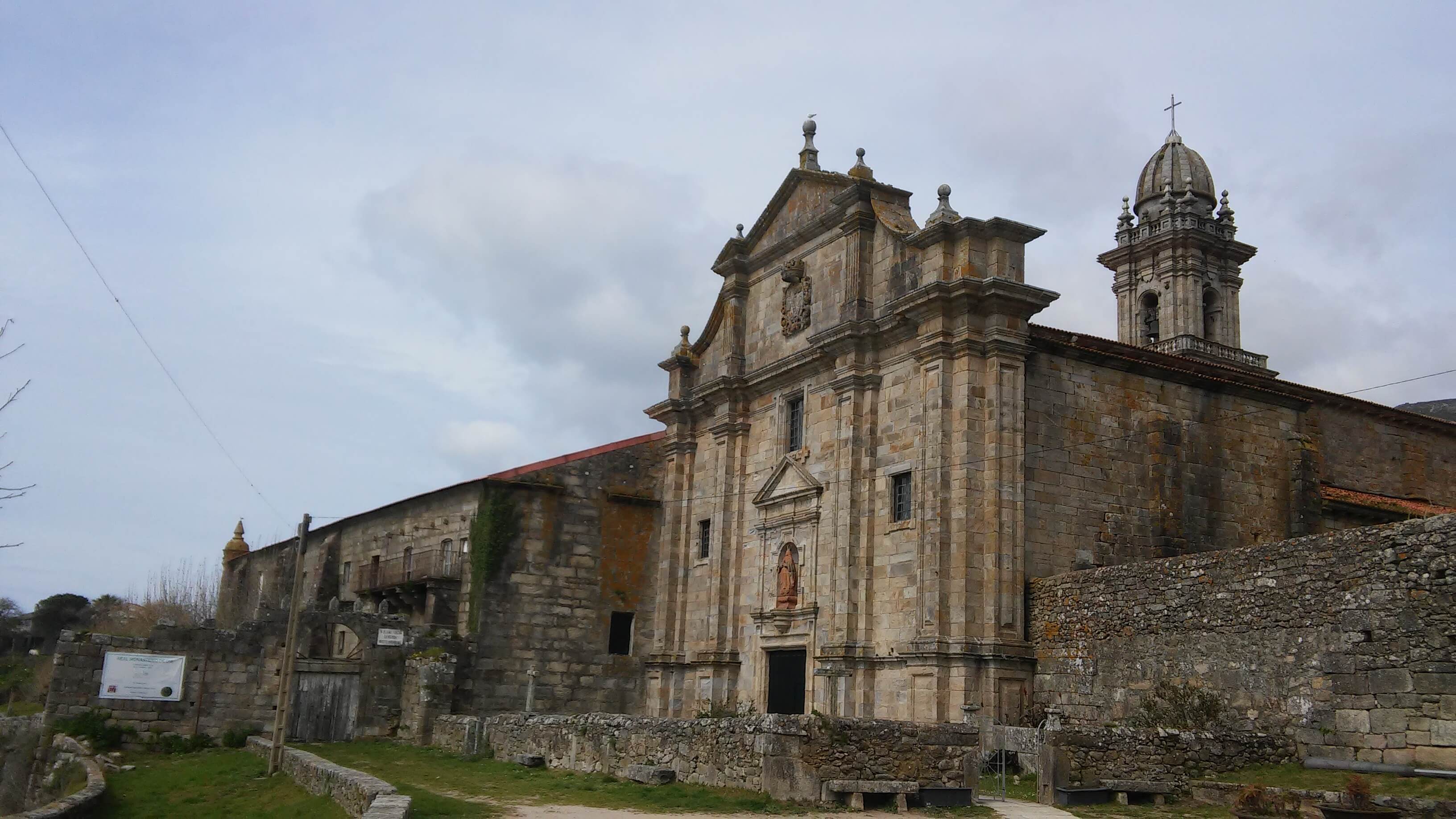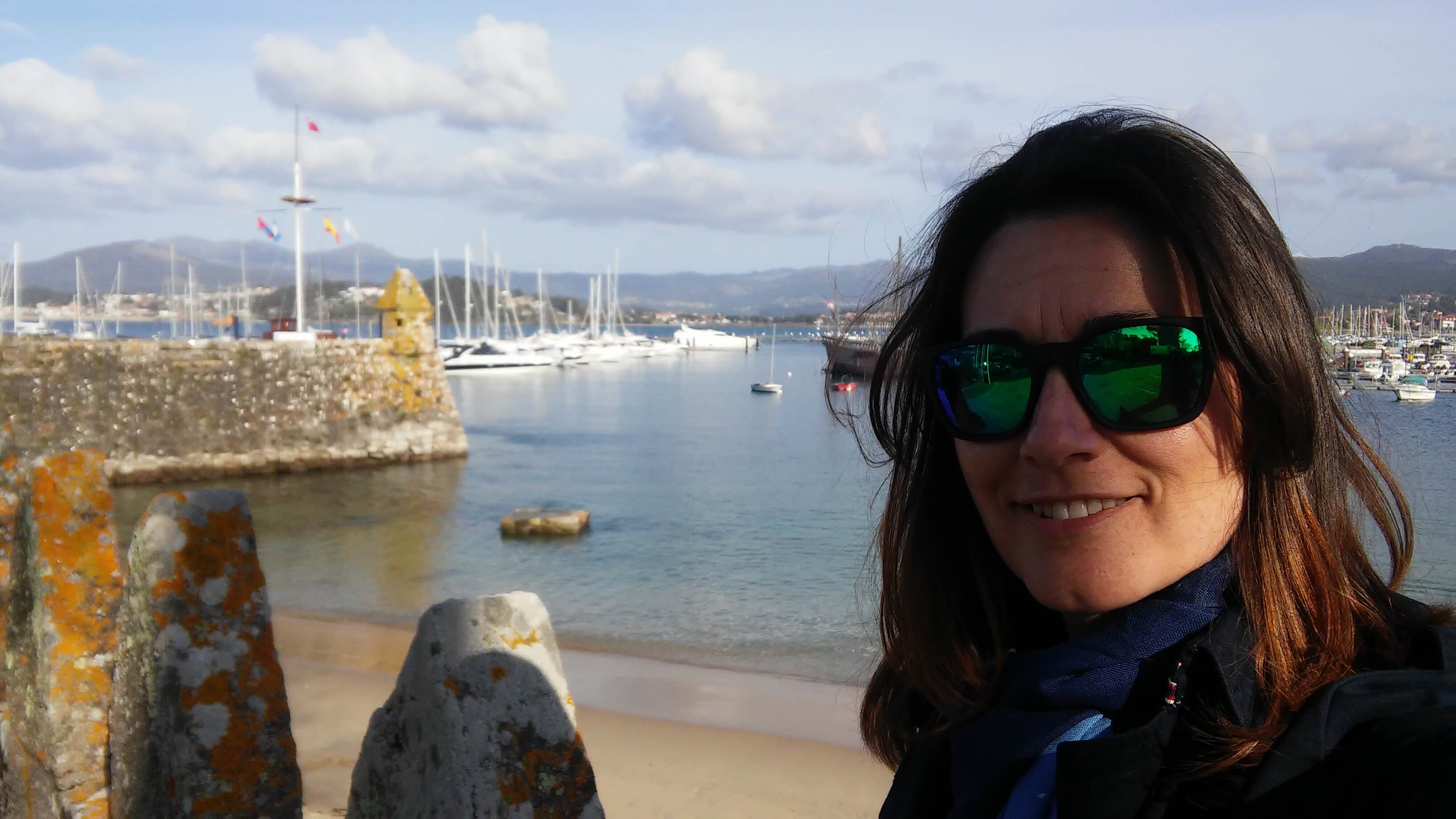SAINT JAMES WAY. PORTUGUESE COASTAL WAY 3

Portuguese Coastal Way to Santiago de Compostela
Saint James Way. Portuguese Coastal Way 3
Monte Santa Tecla

Straight ahead you can see Monte Santa Tecla and the Galician mountains. The walkway is prone to coastal erosion so, if it is closed you can backtrack and head inland to pick up the main road leading into Ancora or try following the beach to get to Ancora depending on where the tide is ! This is a good place to stop for some refreshments with a range of good restaurants and bars popular with day-trippers. After passing a fort, a chapel and cross you reach Playa de Moledo. This is another, beautiful Blue Flag beach, a feature of the camino! Go straight ahead following a forest track through some dense woodland. Eventually you rejoin a lane and head straight ahead to the banks of the River Miño where there are great views including towards the town of Caminha. Caminha is close to the Spanish/Galician border and is an ancient fortress town overlooking the River Miño but close to the beaches. The town has an attractive historical core and you can visit Matriz Church close to where you catch the ferry. After getting off the enjoyable ferry ride you head left along the river as it heads seawards passing another beautiful beach at Camposancos and a hotel,El Molino where you can admire the views from its bar terrace. Then its on to the Port of A Guarda.
A Guarda is located close to the mouth of the River Miño. It’s a fishing port famous for its superb hellfish. It is easy to find a cheap and delicious seafood meal ! There are some excellent local beaches including Playa Area Grande on the edge of the town. The town is famous for the extensive and well conserved remains of a prehistoric, fortified Celtic hill settlement, Santa Tecla, situated high up above the town in the wooded Monte Santa Tecla which was only discovered in 1913! The Celta originates from about 500 BC and there are remnants of over a 100 huts inside an encircling wall. Some have been fully restored with thatched roofs. There is also a stone circle, a church and Celtic museum. The views from the top in every direction either of the sea or inland of Portugal and the River Miño are out of this world and admiring the sunsets from here is one of the wonders of Galicia (it’s best to take a short taxi ride to get there to rest the feet!). If you look closely enough you you can see on a clear day the Earth’s curvature !!
Monastery of Oia
The camino continues north close to the coast often on the cycletrack which runs as far as the edge of Vigo. Admire the sea views as well as the mountains which rise out of the sea. You eventually reach a narrow street in the historic,fishing Port of Oia passing the Casa Rural, a small rural hotel, Casa Puertas on the right and shortly after also on the right the excellent seafood restaurant, Casa Henriqueta. Shortly after there is the impressive 12th century Monastery of Oia.


You can visit the exterior of the Monastery but it is redundant so is not open to the public although in summer there are occasional guided visits organised by the tourist office. Next to the Cross at the entrance to the Old Town which is close to the tourist office you take the road below the giant seawall to leave the village. After passing some isolated restaurants and hotels,you reach the small Port of Mougas which is a popular spot for surfers as well as the locals searching for mussels. You pass a private Albergue, Aguncheiro which is a popular resting place for pilgrims. You then pass some more isolated restaurants, hotels and two campsites next to the main road to Baiona and just before the luxury hotel Talaso Atlantico famous for its seawater spa, you turn right and head up a mountain track between houses. Climbing you can enjoy great views including of the Lighthouse at Cabo Silliero. After reaching the top you then start to drop towards the village of Baredo passing dense woodland.
Then after climbing out of the village along a nice, country lane Baiona appears in the distance after crossing the motorway bridge. Baiona is the most important resort town in the south of Galicia with a well preserved Old Town, a wide variety of important monuments as well as its golden sandy beaches. It can get really busy in July and August so if you like lots of atmosphere and want to experience the nightlife… It was on 1 March 1493 that the ship Carabela La Pinta arrived in the Port of Baiona with news of the discovery of America and you can visit a replica of the ship moored in the harbour which is now a Museum. Other highlights include the fortress which dates back to 1337 within which houses the Parador, at its entrance there is a Tourist Office.




Cíes Islands and Baiona
The grounds of the Parador or the seaside walkway are great places to admire the views of the Bay of Baiona, the Cies Islands,the backdrop of the mountains and sunsets. In summer between June and the end of September you can catch the ferry during the day to the Cies Islands, arguably Spain’s most important National Park. You buy tickets from a modern building, Estacion, which is also has a cafeteria where the boats depart at the end at of the Port. Other places worth seeing include the old convent at the entrance to Rua Ventura Misa, Pazo Mendoza for a drink in its outdoor terrace, the two churches in Santa Liberata, the Sea Navigation Museum and Santísima Trinidad Cross.


This year nearly 400 pilgrims have started their camino from Baiona as it is about 130 km from Santiago so you are entitled to the Compostela on arrival, a certificate to prove you’ve done the camino. This is likely to increase in the future as more pilgrims are walking more than one different camino and there is the perception that the French Way is getting crowded at specific times of the year. Many pilgrims spend a few days resting in Baiona to enjoy its special atmosphere before starting or continuing with their camino.
By Mark Auchingcloss for Pplaza









